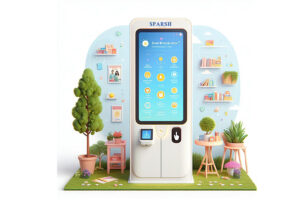Revolutionizing Customer Experience: The Power of Self-Service Kiosks

Title: Revolutionizing Customer Experience: The Power of Self-Service Kiosks
Introduction:
In the digital age, self-service kiosks have emerged as a game-changer in various industries, revolutionizing the way businesses interact with customers. These interactive touch-screen devices empower individuals to independently access services, make purchases, and obtain information. This article explores the growing significance of self-service kiosks and their impact on enhancing customer experiences. We delve into their benefits, applications across industries, and the future potential they hold.
- The Rise of Self-Service Kiosks:
a. Explaining the concept: What are self-service kiosks and how do they work?
b. Evolution and adoption: Tracing the journey from ATMs to modern-day kiosks.
c. The surge in popularity: Factors driving the widespread adoption of self-service kiosks. - Transforming Customer Experience:
a. Convenience and efficiency: How self-service kiosks enable customers to bypass queues and save time.
b. Empowering customers: The sense of control and independence kiosks offer.
c. Personalization and customization: Tailoring experiences to individual preferences.
d. Redefining customer service: How kiosks augment customer support and assistance. - Key Applications in Various Industries:
a. Retail sector: Self-checkout kiosks and automated product information.
b. Hospitality industry: Streamlining hotel check-ins, restaurant orders, and concierge services.
c. Healthcare sector: Appointment scheduling, patient registration, and interactive wayfinding.
d. Transportation and ticketing: Automated ticketing, boarding pass printing, and real-time updates.
e. Banking and finance: Enhanced ATM services, account management, and loan applications. - Benefits and Advantages:
a. Cost savings for businesses: Reducing labor costs and optimizing operational efficiency.
b. Improved accuracy and reduced errors: Minimizing human error in data entry and transactions.
c. Enhanced customer satisfaction: Meeting evolving customer expectations and preferences.
d. Data collection and insights: Leveraging analytics to gain valuable customer behavior data. - Overcoming Challenges and Concerns:
a. Security and privacy considerations: Safeguarding customer information and transactions.
b. Accessibility and inclusivity: Designing kiosks with diverse user needs in mind.
c. User experience and interface design: Ensuring intuitive and user-friendly interactions.
d. Technical support and maintenance: Strategies for addressing glitches and downtime. - The Future of Self-Service Kiosks:
a. Advancements in technology: Integration of AI, machine learning, and biometrics.
b. Seamless omnichannel experiences: Blending kiosk interactions with online and mobile platforms.
c. Integration with Internet of Things (IoT): Smart kiosks in smart cities and connected environments.
d. Emerging trends and innovations: Virtual assistants, voice recognition, and gesture control.
Conclusion:
Self-service kiosks have become indispensable tools for businesses looking to provide exceptional customer experiences. From retail to healthcare, their impact spans across industries, delivering convenience, personalization, and efficiency. As technology continues to evolve, self-service kiosks will likely play an even more significant role in shaping the future of customer interactions. Embracing this technology opens up new possibilities for businesses to engage and delight their customers, ultimately driving growth and success in a highly competitive landscape.




